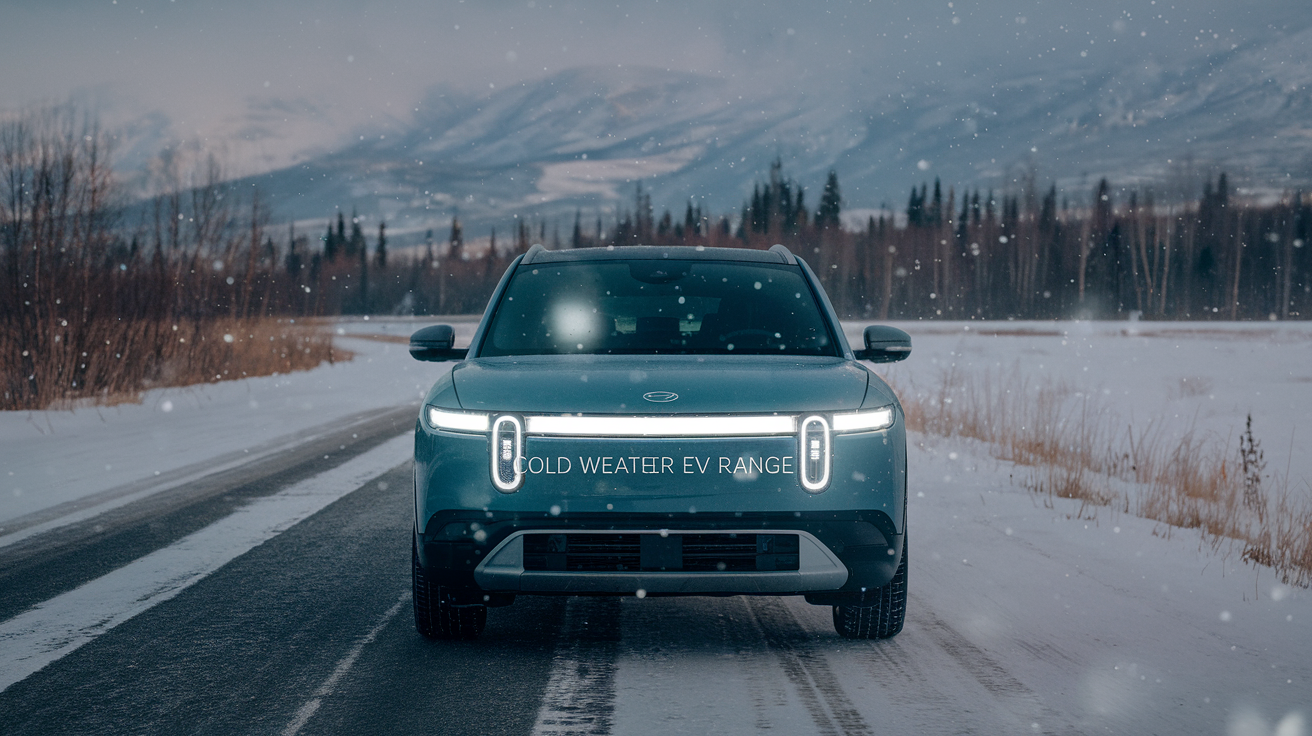
As winter’s icy grip tightens, electric vehicle (EV) owners face a chilling reality: their beloved eco-friendly rides might not go the distance they’re used to. ❄️🚗 Did you know that cold weather can slash an EV’s range by up to 50% at -4°F (-20°C)? This drastic reduction isn’t just about the cold air outside; it’s a perfect storm of factors that drain your battery faster than you can say “brrrr.” How Cold Weather Affects EV Range.
But don’t let the winter blues dampen your EV enthusiasm! While the cold presents challenges, savvy drivers have tricks up their thermal sleeves to maximize range and keep rolling. From preconditioning your vehicle to mastering the art of efficient winter driving, there’s a whole world of strategies waiting to be explored. 🔋💡
In this post, we’ll dive into the frosty facts about how cold weather affects EV range and arm you with practical tips to improve it. We’ll explore the science behind battery behavior in low temperatures, compare how different EV models stand up to the cold, and unveil cutting-edge technologies designed to keep your electric ride running smoothly all winter long. So plug in, warm up, and get ready to become a cold-weather EV expert!
Understanding the Impact of Cold Weather on EV Range – How Cold Weather Affects EV Range
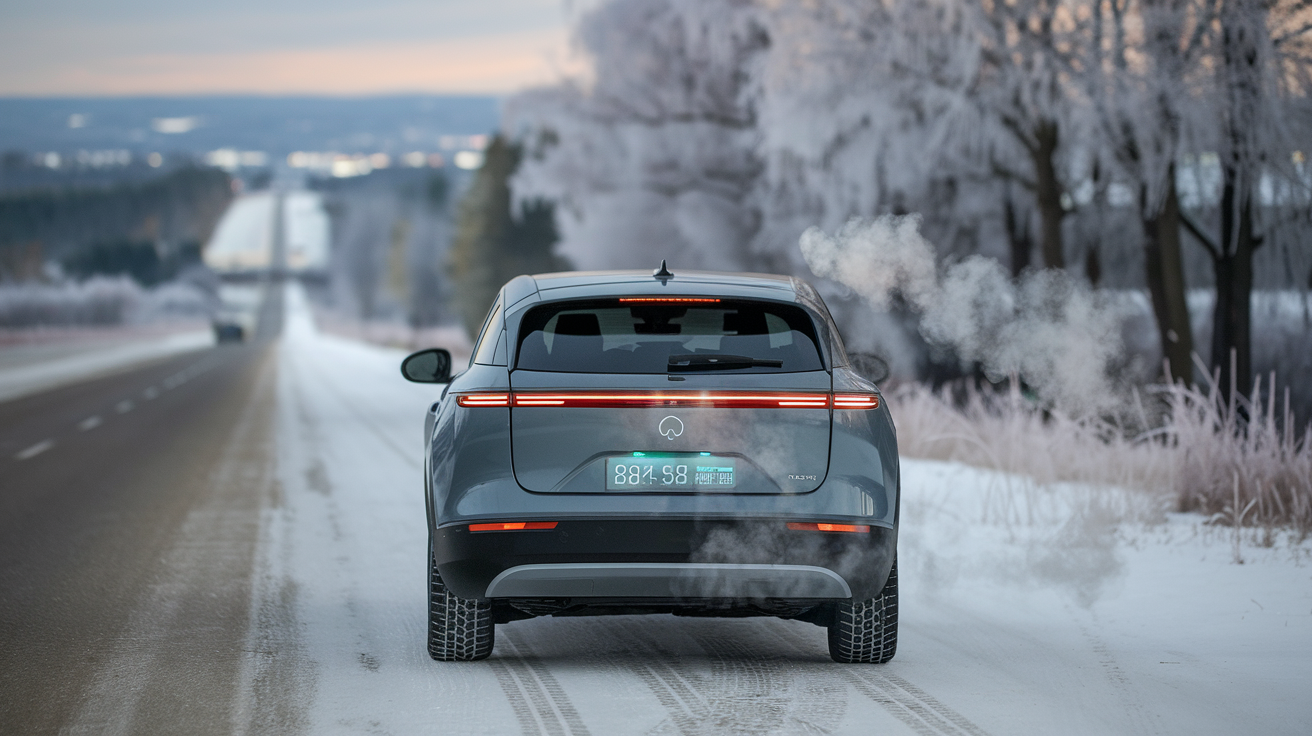
A. Reduction in battery efficiency and performance
Cold weather significantly impacts the performance of electric vehicle (EV) batteries, leading to a noticeable reduction in efficiency. As temperatures drop, the chemical reactions within the battery slow down, affecting its ability to deliver power efficiently. This phenomenon is primarily due to the increased internal resistance of the battery in cold conditions.How Cold Weather Affects EV Range
Key factors contributing to reduced battery efficiency in cold weather:
- Slowed chemical reactions
- Increased internal resistance
- Decreased electrolyte conductivity
- Reduced ability to accept and deliver charge
These factors combine to create a substantial impact on an EV’s overall performance, particularly in terms of range and power output.
B. Decrease in driving range by up to 50% at extreme temperatures
One of the most significant concerns for EV owners during winter is the substantial decrease in driving range. Recent studies and real-world tests have shown that cold weather can drastically reduce an EV’s range, with some models experiencing up to a 50% decrease in extreme conditions.
| Temperature | Range Reduction |
|---|---|
| 20°F (-6°C) | 15-20% |
| 0°F (-18°C) | 30-40% |
| Below 0°F | Up to 50% |
Specific examples of range reduction in popular EV models:
- Tesla Model S: Verified range loss of 19% in freezing conditions
- Ford Mustang Mach-E: Verified range loss of 30% in cold weather
- Rivian R1T: Range drop from 250 to 190 miles at 12°F (-11°C), a 24% decrease
It’s important to note that the extent of range loss varies by model, with some EVs losing as little as 3% and others as much as 32% in freezing temperatures.
C. Slower charging speeds in cold conditions
In addition to reduced range, cold weather also affects EV charging speeds. The lower temperatures slow down the chemical processes within the battery, making it more difficult for the cells to accept a charge efficiently. This results in longer charging times, which can be particularly challenging for EV owners who rely on public charging stations or need to make long trips during winter months.
Factors contributing to slower charging speeds in cold weather:
- Increased internal resistance of the battery
- Reduced conductivity of the electrolyte
- Battery management system limitations to protect the battery
- Potential power output limitations of charging equipment in cold conditions
To mitigate these issues, many EVs now come equipped with battery preconditioning systems. These systems warm up the battery while the vehicle is still plugged in, improving charging efficiency and reducing the time needed to reach full charge.
As we’ve seen, cold weather significantly impacts EV range, efficiency, and charging speeds. However, there are strategies that EV owners can employ to mitigate these effects. With this in mind, next, we’ll explore the various factors affecting EV performance in cold weather and delve deeper into the specific challenges faced by electric vehicles during winter months.How Cold Weather Affects EV Range
Factors Affecting EV Performance in Cold Weather-How Cold Weather Affects EV Range
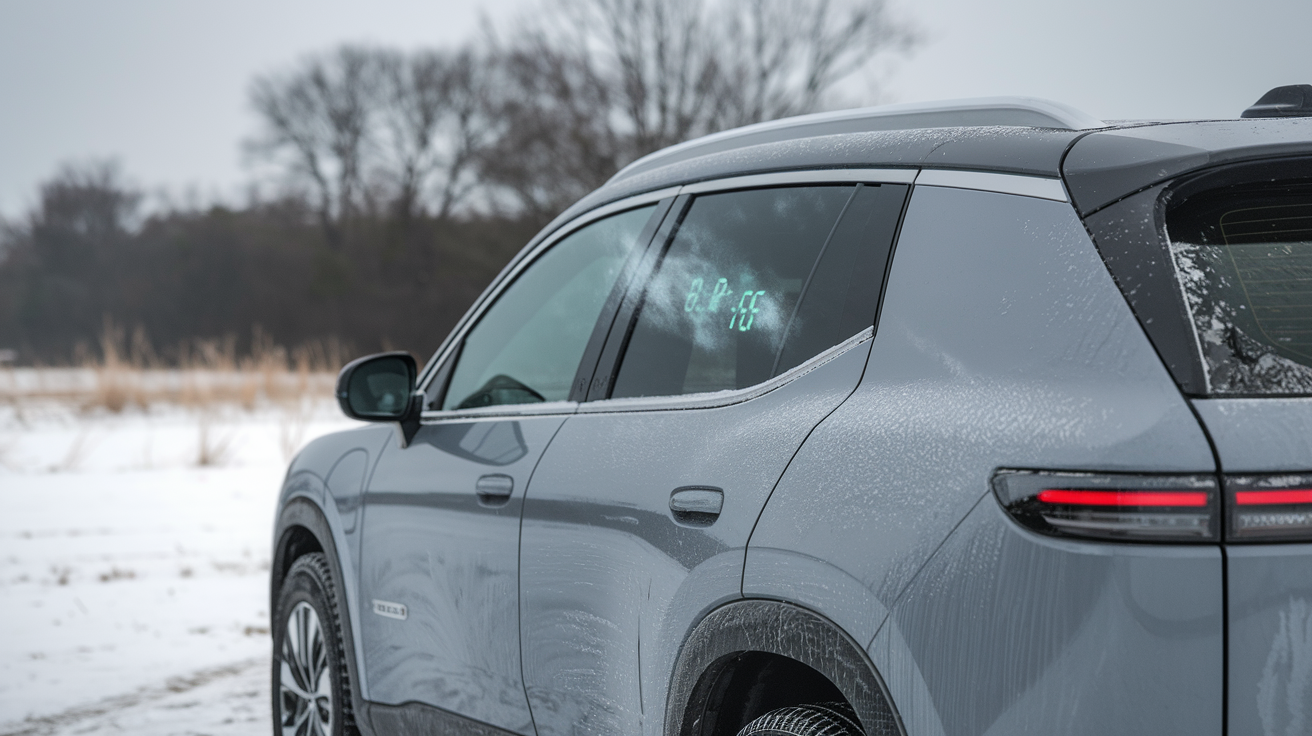
Now that we’ve explored the impact of cold weather on EV range, let’s delve into the specific factors that affect electric vehicle performance during chilly conditions.
A. Increased energy consumption for battery and cabin heating
Cold temperatures significantly increase the energy demands on electric vehicles. The battery, which powers both the drivetrain and auxiliary systems, must work harder to maintain optimal operating conditions. This increased energy consumption manifests in two primary areas:
- Battery heating: To maintain efficiency, the battery management system must keep the cells at an ideal temperature range.
- Cabin heating: Ensuring passenger comfort requires substantial energy, especially in frigid climates.
Research by AAA has shown that when temperatures drop to around 20°F (-6.7°C), EV range can decrease by 10-12%. However, when climate control systems are engaged, this range loss can escalate to a staggering 40%. This highlights the substantial impact of heating systems on overall vehicle performance.
B. Slower movement of lithium ions in cold temperatures
The heart of an electric vehicle’s power system—its lithium-ion battery—is particularly susceptible to cold weather. Low temperatures affect the battery’s chemistry in several ways:
- Reduced conductivity: Cold slows down the movement of lithium ions within the battery.
- Decreased diffusivity: The rate at which ions spread through the electrolyte is diminished.
- Longer charging times: As a result of these factors, charging an EV in cold weather can take significantly longer—up to three times as long, according to studies by Idaho National Labs.
This slowdown in battery function directly translates to a temporary reduction in available range and overall vehicle performance.How Cold Weather Affects EV Range
C. Higher rolling resistance due to lower tire pressure
Cold weather affects more than just the electrical systems of an EV. The vehicle’s tires also play a crucial role in efficiency:
| Factor | Effect on EV Performance |
|---|---|
| Tire Pressure | Decreases in cold, increasing rolling resistance |
| Road Conditions | Snow and ice can further increase resistance |
| Energy Efficiency | More energy required to maintain speed |
To illustrate the importance of proper tire maintenance, consider this comparison:
- Optimal tire pressure: Maintains designed rolling resistance
- Under-inflated tires: Increases rolling resistance, potentially reducing range by 3-5%
Maintaining proper tire pressure becomes even more critical in cold weather to mitigate unnecessary range loss.
It’s worth noting that while most EVs include sophisticated battery management systems to regulate temperature and prevent damage from extreme cold, some models, like the Nissan Leaf, only activate thermal regulation at very low temperatures (below -20°C). This underscores the importance of understanding your specific vehicle’s cold weather capabilities.
As we’ve seen, cold weather presents multiple challenges to EV performance, from increased energy demands to reduced battery efficiency and mechanical factors like tire pressure. With these factors in mind, next, we’ll explore strategies to improve EV range in cold weather, providing practical tips for electric vehicle owners to maximize their driving experience during the winter months.How Cold Weather Affects EV Range
Strategies to Improve EV Range in Cold Weather-How Cold Weather Affects EV Range
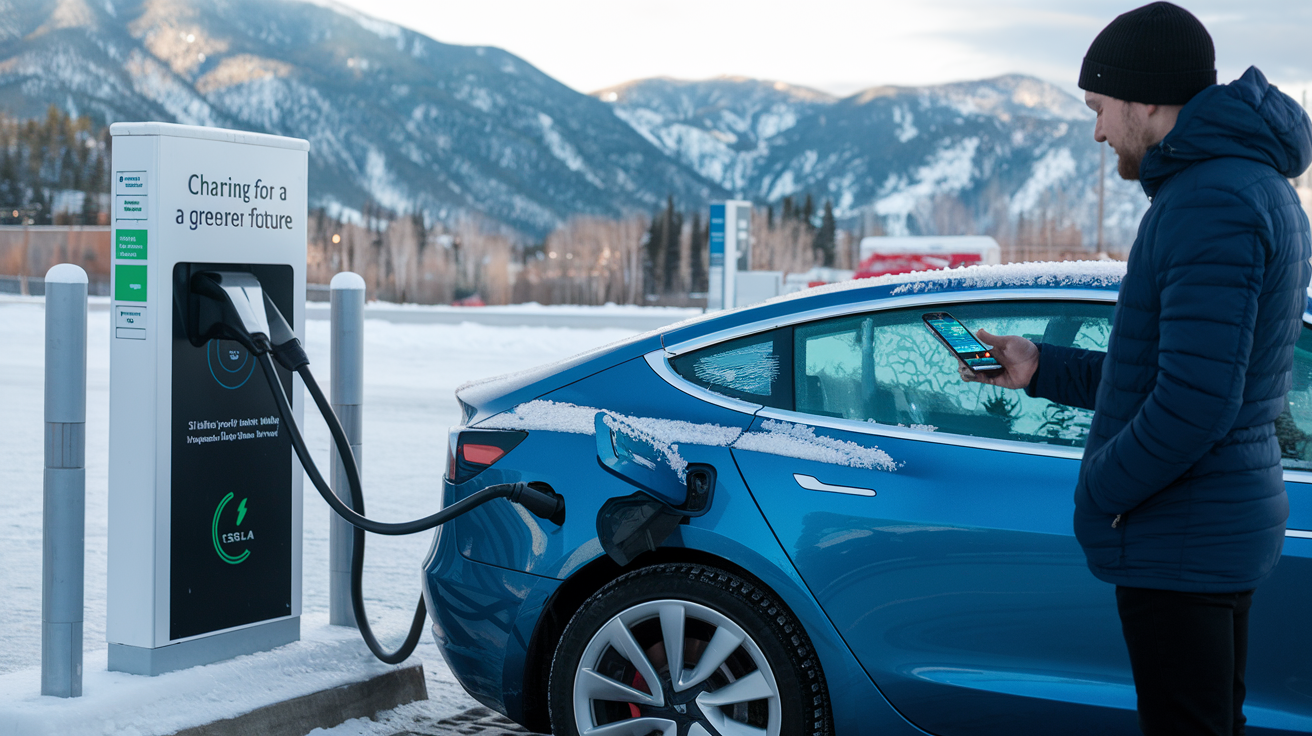
Now that we’ve explored the factors affecting EV performance in cold weather, let’s delve into strategies to improve EV range during chilly conditions. These practical approaches can help you maximize your electric vehicle’s efficiency when temperatures drop.
A. Preconditioning the vehicle while plugged in
Preconditioning is a crucial step in optimizing your EV’s performance in cold weather. By warming up the battery and cabin before departure, you can significantly enhance your vehicle’s range and efficiency. Here’s how to do it effectively:
- Keep your EV plugged in while preconditioning for 20-30 minutes before departure
- Use scheduled heating features if available in your EV model
- Aim to preheat the cabin about 15 minutes before you plan to leave
This strategy not only improves battery performance but also conserves energy for driving, as you’re using grid power rather than battery power for initial heating.
B. Utilizing heated seats and steering wheel instead of cabin heating-How Cold Weather Affects EV Range
After preconditioning, it’s more energy-efficient to use targeted heating methods rather than warming the entire cabin. Consider these options:
- Activate heated seats, which consume less energy than cabin heaters
- Use the heated steering wheel if your EV is equipped with one
- If necessary, heat only the driver’s side instead of the entire cabin
This approach provides comfort while minimizing energy consumption, helping to extend your EV’s range in cold conditions.
C. Maintaining proper tire pressure
Cold temperatures can cause air to contract, reducing tire pressure and increasing rolling resistance. To combat this:
- Regularly check and adjust tire pressure, especially during cold snaps
- Properly inflated tires improve range and overall vehicle efficiency
- Consider using winter or snow tires for better traction in snowy or icy conditions
| Tire Maintenance Action | Benefit |
|---|---|
| Regular pressure checks | Ensures optimal rolling resistance |
| Proper inflation | Improves range and efficiency |
| Winter tire installation | Enhances traction and safety |
D. Adopting smooth driving behaviors and eco mode-How Cold Weather Affects EV Range
Your driving style can significantly impact your EV’s range, especially in cold weather. Here are some tips for efficient winter driving:
- Moderate acceleration and braking
- Utilize regenerative braking for better control and energy recovery
- Activate eco-mode to limit power to the motor and cabin heaters
- Drive at reduced speeds to mitigate efficiency losses caused by cold weather
- Anticipate stops to maximize the benefits of regenerative braking
These techniques not only improve range but also contribute to safer driving on slippery winter roads.
By implementing these strategies, you can significantly improve your EV’s range and performance in cold weather. Remember that proper preparation, such as parking in a garage or keeping your vehicle plugged in when possible, can also help maintain battery warmth and efficiency.
As we move forward, we’ll explore how different EV models compare in their cold weather performance, providing insights into which vehicles might be best suited for winter climates.
Comparing EV Models in Cold Weather Performance
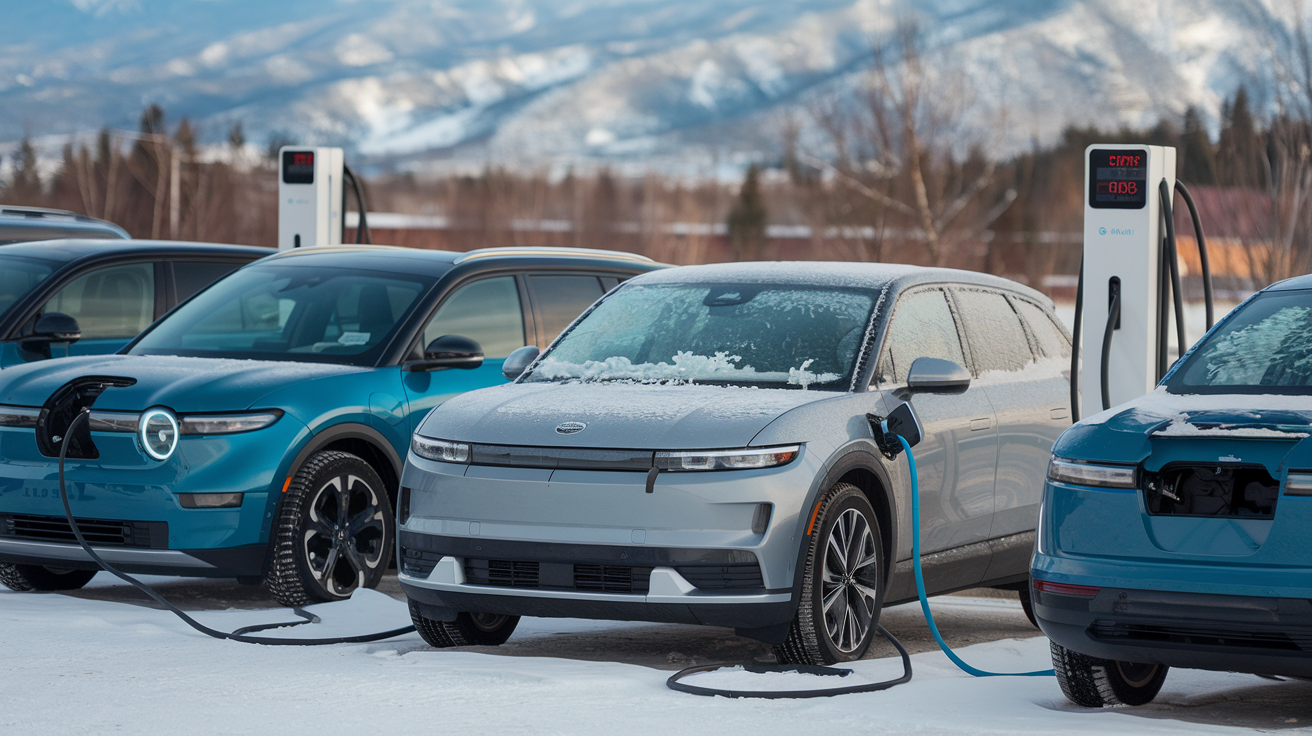
Now that we’ve explored strategies to improve EV range in cold weather, let’s delve into how different EV models compare in their cold weather performance. This analysis will help potential buyers make informed decisions, especially if they live in colder climates.
Efficiency differences among various EV brands and models
The impact of cold weather on EV range varies significantly across different brands and models. Based on real-world data from over 18,000 vehicles, here’s how some popular EVs perform in winter conditions:
| EV Model | Range Retention at 32°F |
|---|---|
| Tesla Models (S, X, Y, 3) | 45-50% |
| Nissan Leaf | 62% |
| Ford Mustang Mach-E | 63% |
| Ford F-150 Lightning | 64% |
| Volkswagen ID.4 | 65% |
| Chevrolet Bolt | 68% |
| Audi e-tron | 80% |
| Hyundai Kona | 84% |
| Hyundai Ioniq 5 | 97% |
| Jaguar i-Pace | 97% |
These figures demonstrate that some EVs are better equipped to handle cold weather than others. For instance, the Hyundai Ioniq 5 and Jaguar i-Pace impressively retain 97% of their range, while Tesla models show a more significant drop, retaining only 45-50% of their EPA range estimates at 32°F.
Impact of preconditioning on different vehicles
Preconditioning plays a crucial role in improving EV performance in cold weather. This feature allows the vehicle to warm up its battery and cabin while still connected to a power source, conserving battery power for driving. The effectiveness of preconditioning varies among different models:
- Tesla vehicles, despite their lower overall range retention, benefit from preconditioning capabilities.
- The Kia EV9 Wind AWD showed an interesting result where preconditioning actually resulted in a lower predicted range despite a higher state of charge.
- Models like the Audi e-tron, Hyundai Ioniq 5, and Jaguar i-Pace, which perform well in cold weather, likely have effective preconditioning systems contributing to their superior range retention.
Role of heat pumps in improving energy efficiency-How Cold Weather Affects EV Range
Heat pumps have emerged as a game-changing technology for improving EV efficiency in cold weather. Unlike traditional resistive heating, heat pumps circulate heat rather than generating it from scratch, resulting in significant energy savings:
- EVs equipped with heat pumps can reduce range loss in cold conditions to approximately 11%, compared to the typical 20% loss without heat pumps.
- The Audi e-tron, which retains 80% of its range in cold weather, comes standard with a heat pump.
- Tesla’s transition to heat pumps in 2021 notably improved the cold weather performance of its Model S sedans compared to older models.
- The Hyundai Ioniq 5 and Jaguar i-Pace, both achieving 97% range retention, likely benefit from advanced heat pump technology.
However, it’s important to note that heat pumps become less effective in extreme cold, particularly below 15°F, where vehicles may revert to less efficient electric resistance heating.
As we move forward to discuss advanced technologies for cold weather EV performance, it’s clear that features like heat pumps and effective preconditioning systems are becoming increasingly important in the evolution of electric vehicles. These technologies not only improve range retention but also enhance the overall driving experience in colder climates, addressing one of the key concerns for potential EV buyers in such regions.
Advanced Technologies for Cold Weather EV Performance – How Cold Weather Affects EV Range
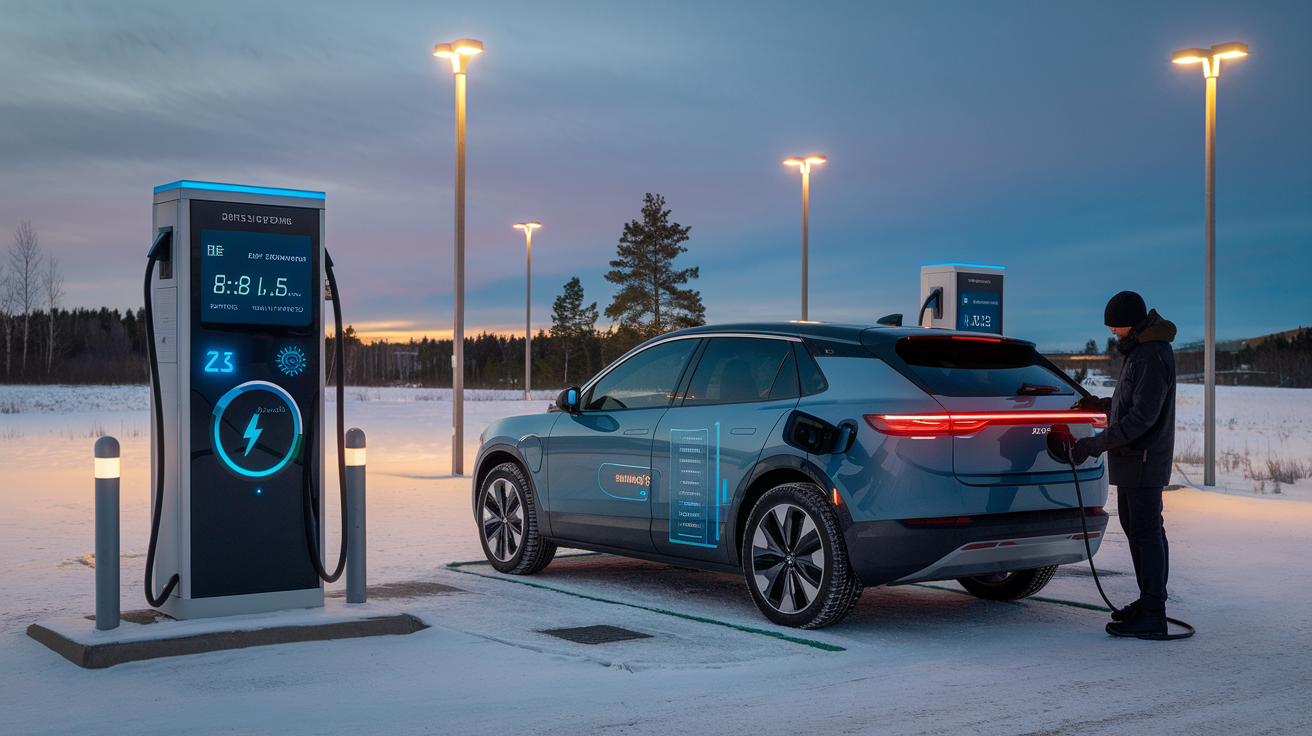
Now that we’ve compared various EV models’ performance in cold weather, let’s explore the cutting-edge technologies being developed to enhance electric vehicle performance in chilly conditions.
A. Development of new battery chemistries for improved cold weather performance
Researchers are making significant strides in developing battery chemistries that can withstand and perform better in cold temperatures. Some of the promising advancements include:
- Lithium-titanate batteries: These offer fast-charging capabilities and improved low-temperature performance. However, they have lower voltage and energy density, requiring larger battery packs.
- Silicon-anode Li-ion batteries: These promise longer ranges and quicker charging but are still working on achieving satisfactory life cycles.
- Sodium-ion batteries: A lithium-free alternative that maintains better performance in cold conditions, though they have lower energy density, resulting in reduced driving ranges.
- Solid-state batteries (SSBs): Utilizing sulfide-based electrolytes, SSBs enhance energy stability and performance in cold weather. However, they are currently expensive and require more lithium than conventional batteries.
| Battery Type | Cold Weather Performance | Challenges |
|---|---|---|
| Lithium-titanate | Improved | Lower voltage, larger size |
| Silicon-anode Li-ion | Promising | Life cycle issues |
| Sodium-ion | Better than Li-ion | Lower energy density |
| Solid-state | Enhanced stability | High cost, more lithium |
Recent research has also focused on improving existing lithium-ion batteries. A study from the University of Michigan developed new ion pathways in battery anodes, enhancing lithium ion movement during charging. By coating the anode with a 20 nanometer-thick layer of lithium borate-carbonate, researchers achieved a 500% increase in charging efficiency in sub-zero conditions.
B. Integration of heat pumps in newer EV models
Heat pumps are becoming increasingly common in newer EV models to improve energy efficiency in cold weather. These systems:
- Extract heat from the surrounding air or the vehicle’s powertrain
- Efficiently warm the cabin and battery pack
- Reduce reliance on resistive heating, which can significantly drain the battery
The integration of heat pumps helps maintain battery temperature and extend driving range in cold conditions.
C. Battery management systems designed for cold conditions
Advanced battery management systems are crucial for optimizing EV performance in cold weather. These systems incorporate:
- Pre-conditioning: Warming the battery while charging to minimize energy loss
- Active heating systems: Maintaining optimal battery temperature during vehicle operation
- Smarter energy management strategies: Balancing power distribution between driving and heating needs
For example, Renault has developed an innovative water-cooling system that helps maintain battery temperature in colder climates.
As we move forward to discuss safe winter driving with EVs, it’s important to note that these advanced technologies are not only improving cold weather performance but also enhancing overall safety and reliability of electric vehicles in challenging conditions.
Safe Winter Driving with EVs
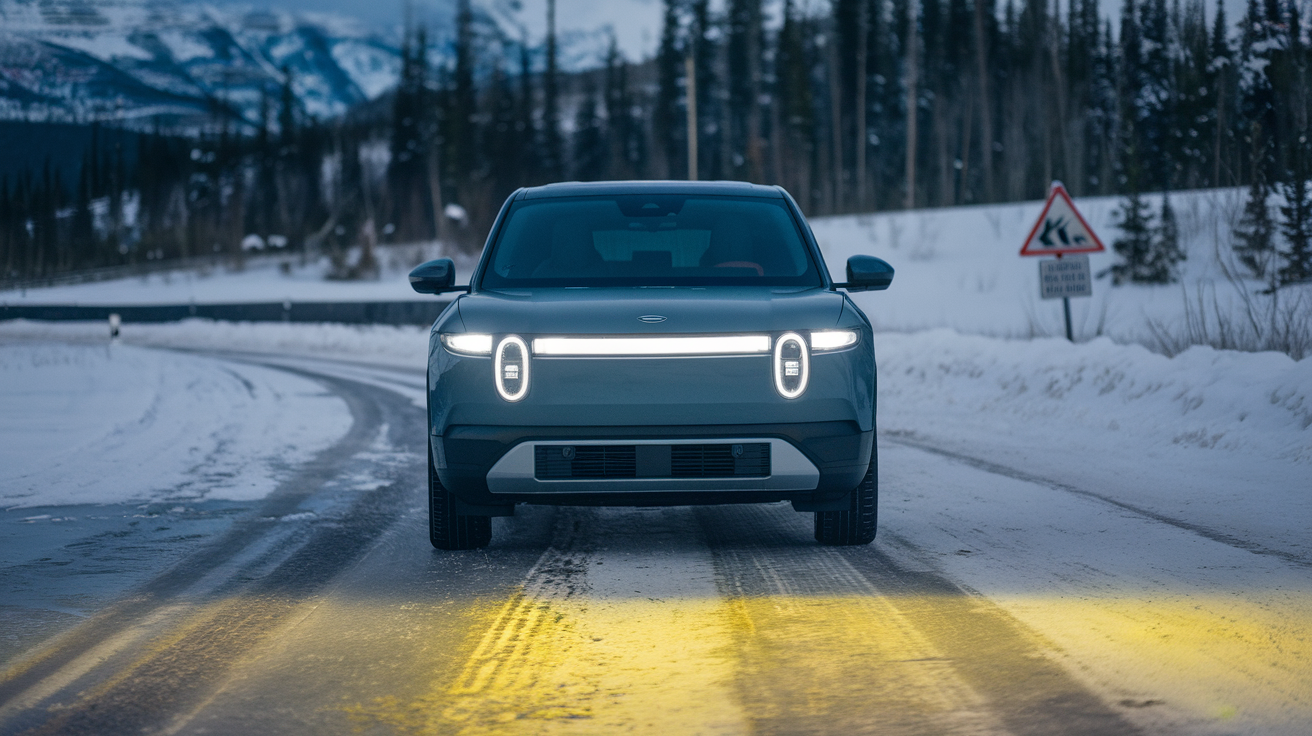
Now that we’ve explored advanced technologies for cold weather EV performance, let’s shift our focus to safe winter driving practices with electric vehicles. While technological advancements play a crucial role, understanding how to operate your EV safely in winter conditions is equally important.
Traction control and all-wheel drive capabilities
Electric vehicles are well-equipped to handle winter driving conditions, thanks to their advanced traction control systems and all-wheel drive capabilities. These features provide several advantages:
- Improved stability on slippery surfaces
- Better weight distribution due to battery placement
- Instant torque delivery for controlled acceleration
To maximize these benefits:
- Ensure your EV’s traction control system is active
- If available, engage the all-wheel drive mode
- Maintain proper tire pressure for optimal traction
| Feature | Benefit |
|---|---|
| Traction Control | Prevents wheel spin on icy roads |
| All-Wheel Drive | Enhances stability and control |
| Proper Tire Pressure | Improves grip and handling |
Modes for snowy conditions
Many EVs come equipped with specialized driving modes for winter conditions. These modes can significantly improve your vehicle’s performance and safety in snow:
- Eco or Chill mode: Moderates acceleration and power, extending range and reducing the risk of wheel spin
- Snow mode: Adjusts power delivery and traction control for better handling on snowy roads
- Reduced regenerative braking: Prevents sudden deceleration on slippery surfaces
It’s advisable to:
- Familiarize yourself with your EV’s winter driving modes before the cold season
- Avoid using cruise control in icy conditions, as it can lead to sudden acceleration or braking
- Turn off one-pedal driving to prevent rapid deceleration on slippery roads
Precautions for extreme cold temperatures
Extreme cold can significantly impact EV performance and safety. Here are some crucial precautions to take:
- Battery management:
- Keep the battery charged above 20% to ensure sufficient reserve for warmth
- Precondition the battery before fast-charging to optimize charging speeds
- Charge to 100% during winter to maximize available range
- Cabin comfort and efficiency:
- Preheat the cabin while the vehicle is still plugged in to conserve battery power
- Use heated seats instead of blasting cabin heat for more efficient warming
- Keep winter gloves and warm items in the vehicle for emergencies
- Driving practices:
- Avoid aggressive driving and high speeds for safety and range preservation
- Allow extra time for trips due to potentially slower charging speeds
- Reduce vehicle weight by removing unnecessary items to improve range
- Tire maintenance:
- Install dedicated winter tires for improved traction in icy conditions
- Regularly check and maintain proper tire pressure, as cold air can lead to underinflation
By following these precautions and tips, EV drivers can ensure safer and more efficient winter driving experiences. Remember that while electric vehicles have unique considerations in cold weather, they also offer advantages in traction control and weight distribution that can enhance winter driving performance when properly managed.

Cold weather poses significant challenges for electric vehicle performance, with range reductions of up to 50% in extreme conditions. However, EV owners can employ various strategies to mitigate these effects. Preconditioning the vehicle, using targeted heating solutions like heated seats, maintaining proper tire pressure, and adopting smooth driving habits are all effective ways to maximize battery efficiency in winter. Additionally, enabling eco mode and managing speed can further conserve energy and enhance control in slippery conditions.
As EV technology continues to evolve, manufacturers are developing models better suited for cold climates and improving battery chemistries for enhanced low-temperature performance. While current EVs may face challenges in extreme cold, they remain safe and viable options for winter driving when proper precautions are taken. By understanding the impact of cold weather on their vehicles and implementing these practical tips, EV owners can confidently navigate winter conditions while maximizing their vehicle’s performance and range.
